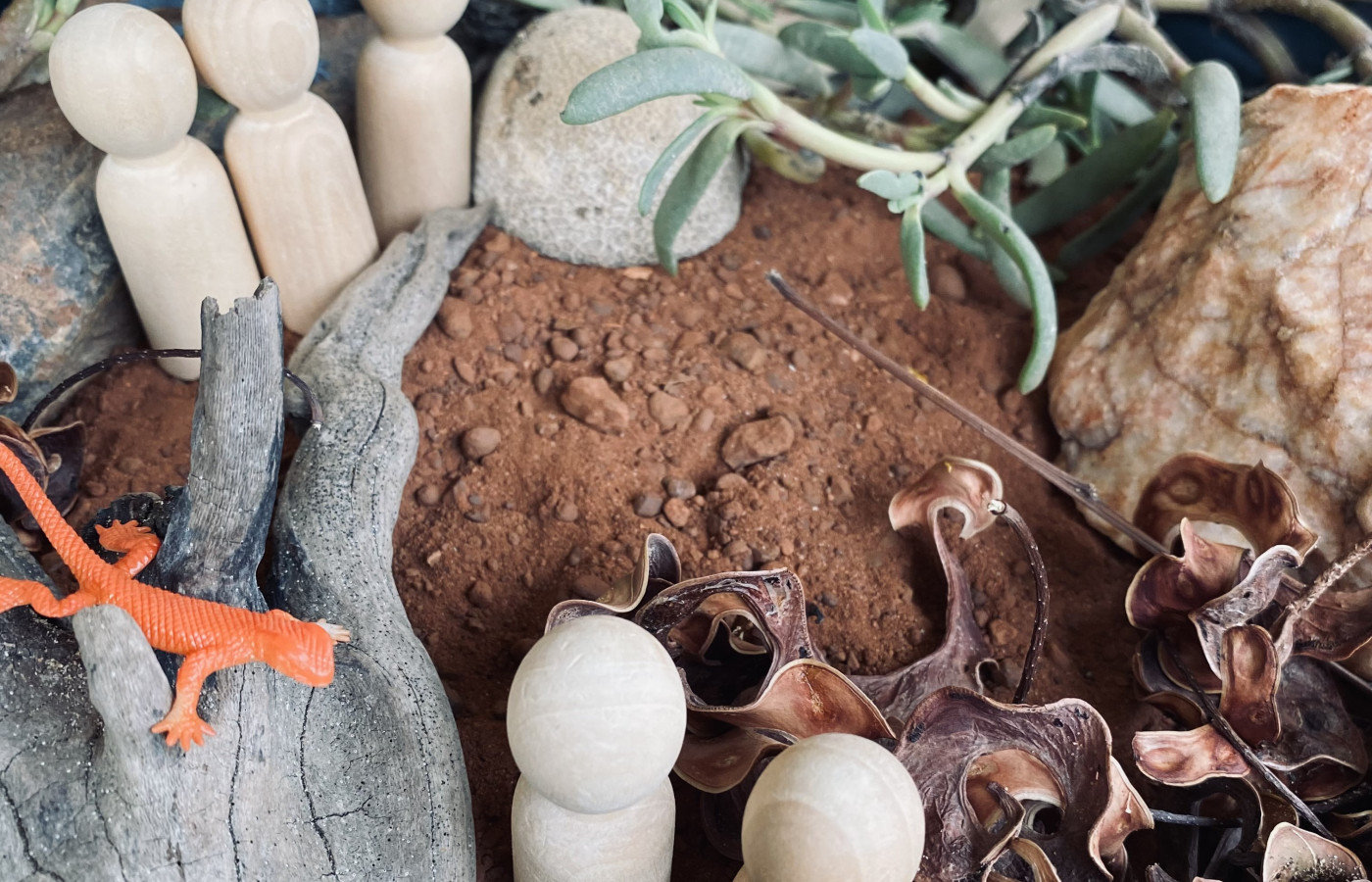Make your own swamp!

Make your own swamp!
Making a swamp with household and natural items.
Materials Required
- A tray, bucket or bowl
- Leaves, dirt, sand, flowers and natural materials
- Water
- Spoons for stirring
- Green food colouring.
Plastic mat or newspaper to protect floor/table if swamp being made indoors, Towel for easy drying of hands.
Play experience profile
-
Ages:
-
Min Playtime15 - 30 Minutes
-
Skills
-
Energy LevelActive play
-
Messiness Rating
-
EYLF Outcomes
Play Experience Preparation
Clear a space that you will be making a swamp in - Have a bucket/tray ready - Prepare some water to be used in the swamp.Experience Steps
- Take your child on a walk around the yard, neighbourhood or park to find natural materials for the swamp.
- Talk to your child about the materials they have found and what they look like and how they feel.
- When you are ready to make the swamp add dry materials first like dirt and sand.
- Add water (If using food colouring add this to the water before you pour over natural materials).
- Add leaves and sticks and any other items you have collected.
- Add any toy animals you may have at home.
- Play alongside your child and have fun!
- Talk to your child about how the swamp looks and feels.

What to talk about, or questions to ask during the experience
- Water, dirt, sand, mud
- Squishy
- Wet, dry, cold, cool
- Swish and swirl
- Animals and animal sounds
- Encourage your child to talk about their play and add language.
Build on this...
- Make a sea life tray or bucket using blue water, shells, sand and sea animals.
WHO guidelines for physical activity and sedentary behaviour
Provide evidence-based public health recommendations for children, adolescents and adults on physical activity.
Learn more
Provide evidence-based public health recommendations for children, adolescents and adults on physical activity. Learn more
This activity will promote your child using up physical energy as part of their day by walking around the yard or neighbourhood to collect materials.
EYLF Outcomes
The Early Years Learning Framework has been designed for use by early childhood educators working in partnership with families, children’s first and most influential educators.
View PDF
The Early Years Learning Framework has been designed for use by early childhood educators working in partnership with families, children’s first and most influential educators. View PDF
- Children develop knowledgeable and confident self identities
- Children feel safe, secure, and supported
- Children develop their emerging autonomy, inter-dependence, resilience and sense of agency
EYLF Practice
Practice: Learning through play. Play can expand children’s thinking and enhance their desire to know and to learn. In these ways play can promote positive dispositions towards learning. Children’s immersion in their play illustrates how play enables them to simply enjoy being.
Author:


